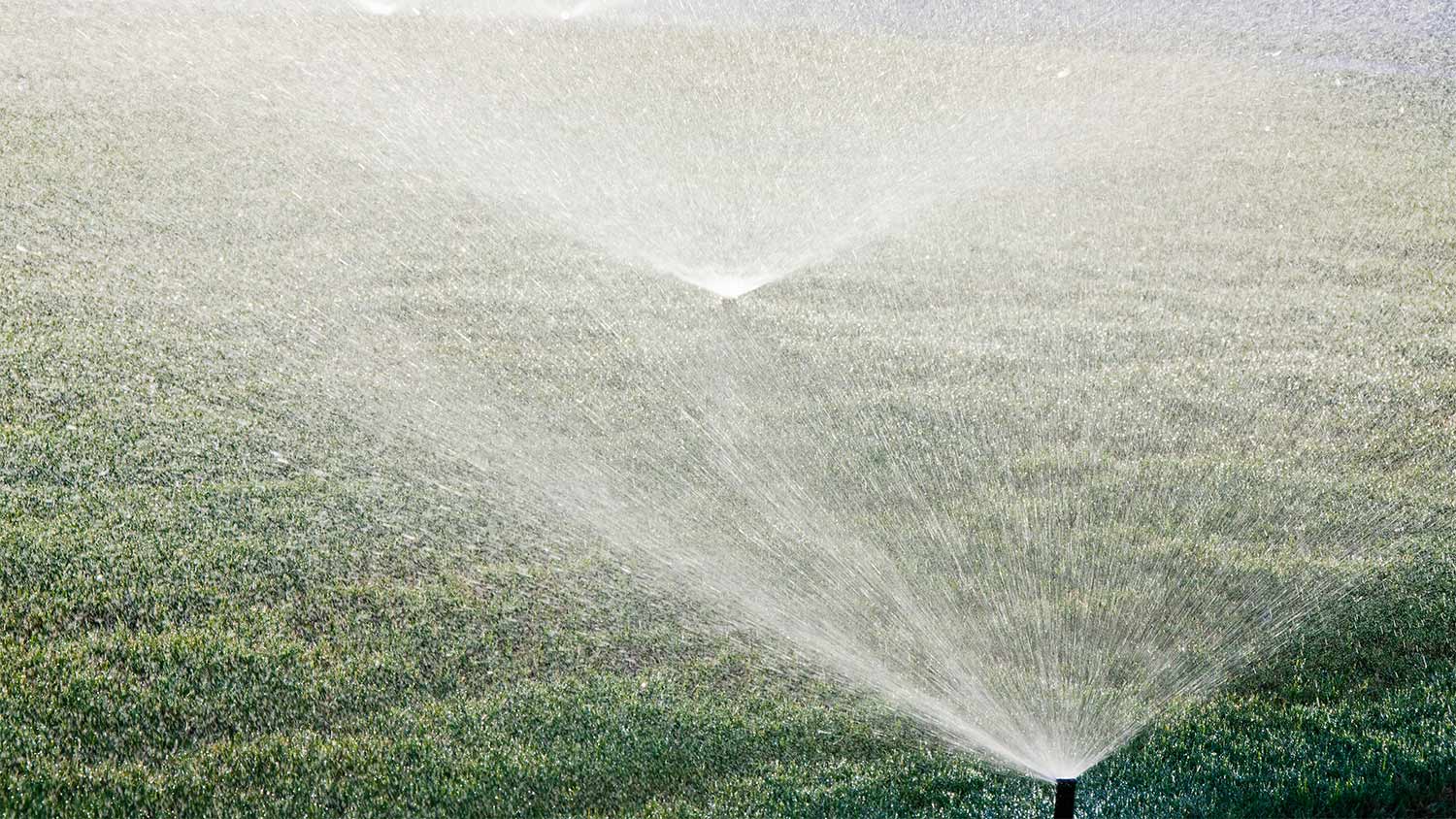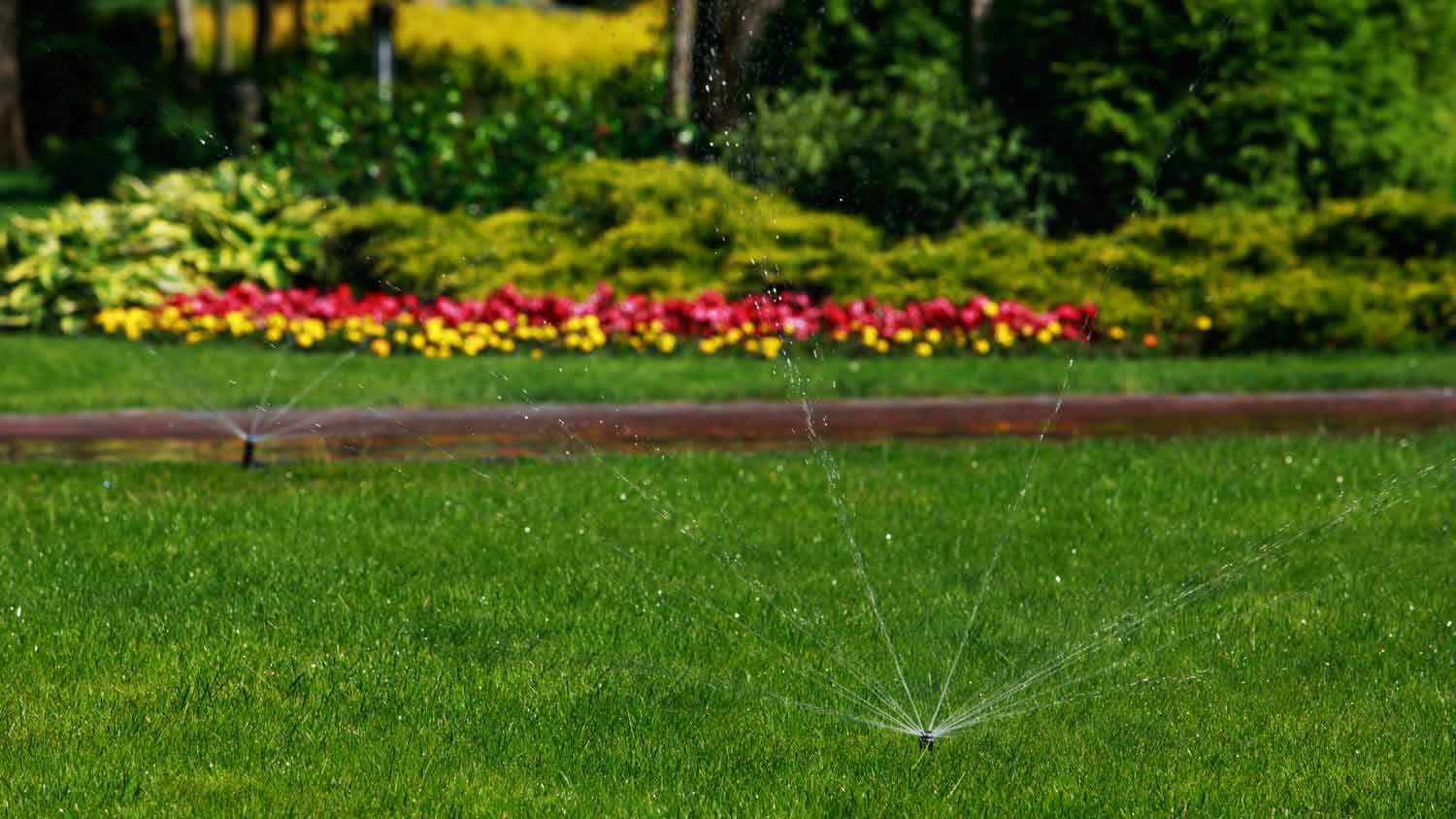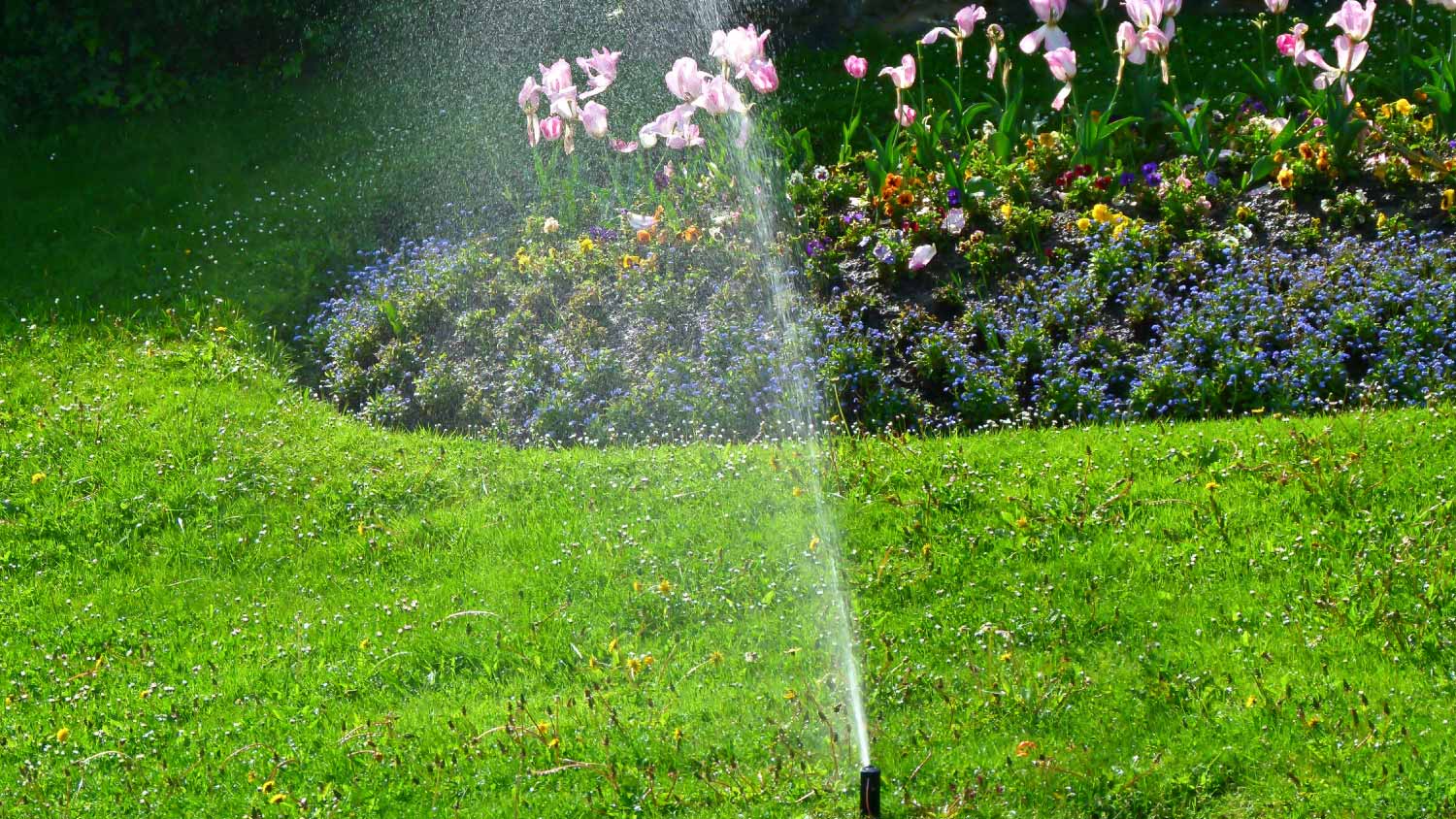11 Sprinkler System Maintenance Tips to Keep Your Sprinklers on Point
A sprinkle of care can help keep your irrigation system at its best


It’s important to develop a sprinkler system maintenance plan and check all components regularly.
Keeping the various parts of your system clean and clear of debris are vital to the health of the system.
Smart sprinkler technology can detect issues and identify them before you even know something is wrong.
Whether it’s creating a play fountain for your kids, adding ambience to your slow-motion runs, or keeping your yard and flowers flourishing, your sprinkler system does a lot. To keep it working efficiently and effectively, proper irrigation system maintenance is key. Here are the best tips to care for your sprinklers.
Don't neglect your sprinkler system maintenance, such as annual cleanings and inspections. These upkeep tasks can help prevent costly issues like clogged pumps and leaking pipes.
1. Develop a Sprinkler System Maintenance Schedule
An irrigation system has lots of small moving parts, which means there are multiple ways it could clog up or malfunction. You should check on your system at least once per season as the weather changes.
It’s also a good idea to get yearly or biannual professional sprinkler checkups and maintenance, ideally when turning on or shutting off your irrigation system for the season. That way, you can invest in the cost of sprinkler repairs before they become bigger problems. If you spot any issues, call a local sprinkler professional for a more in-depth analysis.
2. Clean Your Sprinkler Heads
Dirt and other debris from the ground can easily clog up your sprinklers over time. If there are any blockages, areas of your lawn or garden could get missed and turn into dead or brown patches. It’s important to clean your sprinkler heads at least once per year to keep the system running efficiently. This typically entails removing the heads and soaking them in a cleaning solution—consult your manufacturer’s instructions to find out which cleaners to use.
3. Address Leaks ASAP
Small sprinkler valve leaks are a slippery slope that can lead to larger drainage problems with your irrigation system. This can cause certain areas to get too much water, while others don’t get enough. Be sure to regularly check that water pressure stays consistent and that all areas are getting watered evenly.
4. Install a Rain Sensor on Your Sprinkler System

Having your irrigation sprinklers running during a rainstorm isn’t just wasteful—it might also overwhelm your yard. If you don’t already have one, install a rain sensor that can shut programmed irrigators off based on soil moisture levels. Adjusting your system throughout the year based on weather and plant needs can also reduce water consumption.
5. Monitor Water Pressure
If you notice more of a mist rather than a spray coming out of your sprinkler heads, this can compromise efficiency. The wind can carry water droplets from a mist and prevent them from reaching your plants. You can fix this issue with a water pressure regulator or booster pump. This step will avoid larger drainage problems from developing in the future.
6. Manage Weeds and Lawn Disease

Weeds, fungus, and disease can suck up more water than a healthy yard, so it’s important to stay on top of weed control. On top of that, they negatively plant health, often making your sprinkler system’s hard work be in vain. You can control weeds naturally with mulch or cardboard. Nab individual weeds by pulling them up by the root or spraying vinegar directly on the weed.
7. Vary Watering by Plant Type
Grass and plants in landscaped beds typically require different amounts of water. Work with your trained irrigator, landscape professional, or university extension office to designate separate watering zones based on plant needs for your area and the time of year.
8. Measure Output

Once you know how much water your plants need, measure the output of your sprinkler to determine how long to run them. Set out tuna cans, measuring cups, or a flat cupcake pan and turn on your irrigation system or sprinkler. Water for 30 minutes and use a ruler to measure how much water got collected. Then, use this information to calculate how much time it takes to get the correct output from your sprinklers.
9. Use Mulch to Help Conserve Water
Adding 2 to 4 inches of mulch to beds keeps moisture in the ground, reducing the strain on your sprinkler system. The right type of mulch reduces evaporation, lessens temperature changes, and helps control weeds.
10. Water Early or Late
Whether you’re using an irrigation system, watering can, or garden hose, it’s always best to water early in the morning or late at night. Watering in the afternoon when the sun is at its hottest can lead to your soil drying out before the evening when lower temperatures and wind speeds reduce evaporation.
11. Try Smart Technology
Smart technology is making lives easier in every field, including gardening and yard cultivation. Smart sprinklers can help you get the most luscious yard, brightest flowers, or best crop of veggies you’ve ever had.
You can set up a sprinkler system to deliver the perfect amount of water every day—that’s a pretty common feature. But smart sprinklers can also help you precisely configure your water output based on exactly what you’re growing and automatically adjust watering times based on a variety of factors, including the weather. This ensures that you’re not using your sprinklers too much, causing early wear and tear. With many systems, you’ll also get an alert to your device if something is wrong, cutting down on diagnostic time and allowing you to get to repairs quicker.
Frequently Asked Questions
Irrigation system maintenance starts with thorough inspections, which you should carry out twice per watering season. Checking every component of your sprinkler system for signs of damage or wear and tear can catch problems early and reduce potentially costly issues. You’ll also need to winterize your sprinkler system once cold weather hits, and clean its parts a few times per watering season.
Yes. You can use a small amount of silicone spray on sprinkler heads if they’re jammed or have a hard time popping up. Don’t use oil (like WD-40) or grease. If the sprinkler heads still have issues after lubricating, you can replace the entire head for a low cost, $15 to $20, or call a pro if you think there’s a larger issue.
A local sprinkler repair pro can perform sprinkler maintenance to keep your irrigation system at its best. They will start by doing a quick inspection and basic maintenance tasks. After diagnosing any issues, they will replace parts as needed, which will not take very long for a basic maintenance visit.





- How Irrigation Systems Work to Make Sure Your Lawn Is Happy and Healthy
- How Much Water Does a Sprinkler Use for Lawn Irrigation? (And How Much Is It Costing You?)
- Spray Irrigation Pros and Cons: A Complete Guide
- How to Design the Sprinkler System of Your Dreams
- 9 Irrigation Tips To Save Water, Time, and Money
- How to Build a DIY Sprinkler System and Water Your Whole Yard at Once
- 8 Types of Sprinkler Heads to Get Your Grass Growing
- Sprinkler Head Isn't Rotating: 4 Common Reasons Why
- Do You Know Who to Call for Sprinkler Repair? What to Do When Your Irrigation System Is Out of Commission
- Sprinklers 101: The Key Parts of the Sprinkler System
















